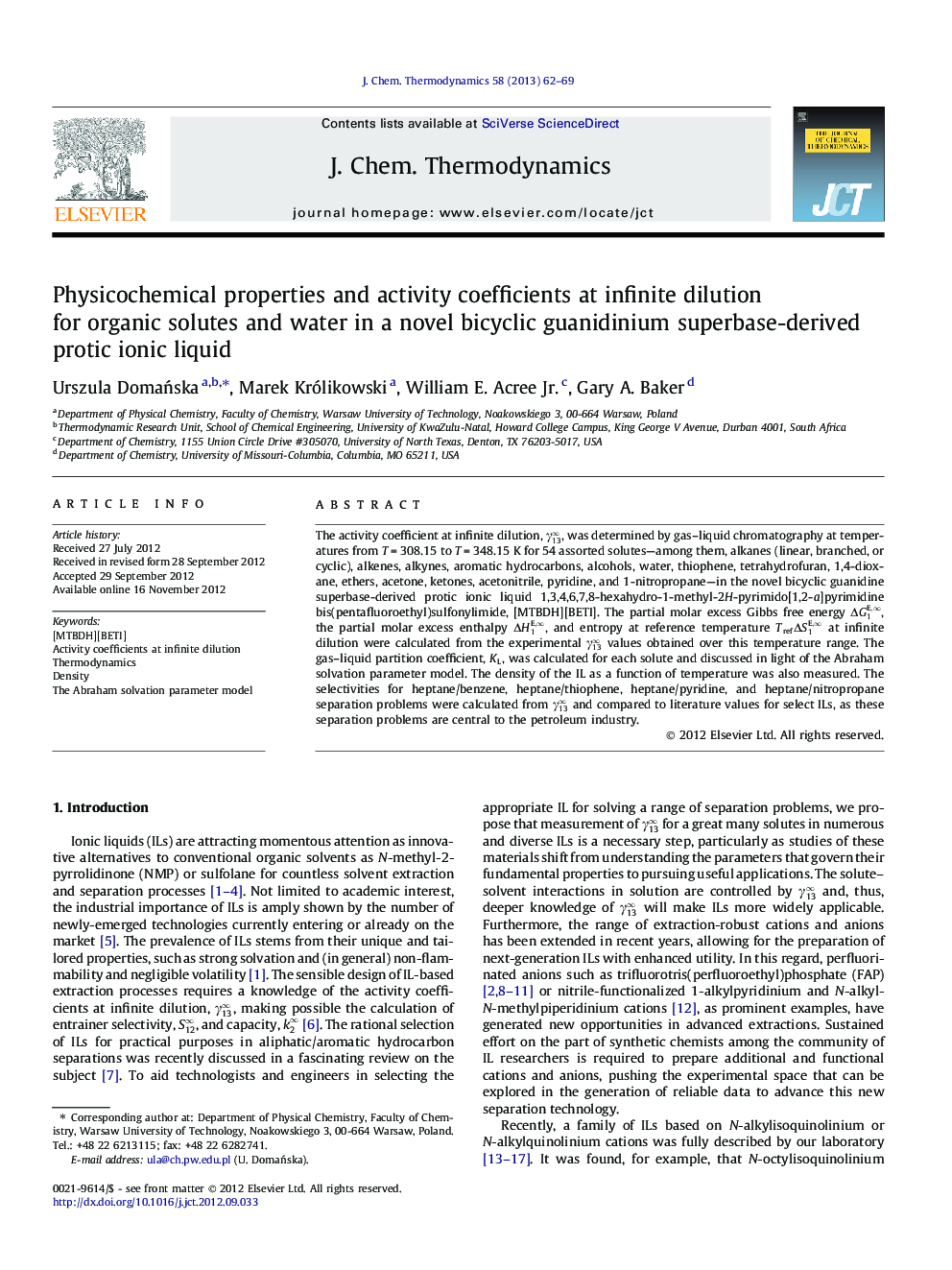| Article ID | Journal | Published Year | Pages | File Type |
|---|---|---|---|---|
| 215803 | The Journal of Chemical Thermodynamics | 2013 | 8 Pages |
The activity coefficient at infinite dilution, γ13∞, was determined by gas–liquid chromatography at temperatures from T = 308.15 to T = 348.15 K for 54 assorted solutes—among them, alkanes (linear, branched, or cyclic), alkenes, alkynes, aromatic hydrocarbons, alcohols, water, thiophene, tetrahydrofuran, 1,4-dioxane, ethers, acetone, ketones, acetonitrile, pyridine, and 1-nitropropane—in the novel bicyclic guanidine superbase-derived protic ionic liquid 1,3,4,6,7,8-hexahydro-1-methyl-2H-pyrimido[1,2-a ]pyrimidine bis(pentafluoroethyl)sulfonylimide, [MTBDH][BETI]. The partial molar excess Gibbs free energy ΔG1E,∞, the partial molar excess enthalpy ΔH1E,∞, and entropy at reference temperature TrefΔS1E,∞ at infinite dilution were calculated from the experimental γ13∞ values obtained over this temperature range. The gas–liquid partition coefficient, KLKL, was calculated for each solute and discussed in light of the Abraham solvation parameter model. The density of the IL as a function of temperature was also measured. The selectivities for heptane/benzene, heptane/thiophene, heptane/pyridine, and heptane/nitropropane separation problems were calculated from γ13∞ and compared to literature values for select ILs, as these separation problems are central to the petroleum industry.
Graphical abstractFigure optionsDownload full-size imageDownload as PowerPoint slideHighlights► Measurements of activity coefficients at infinite dilution using GLC. ► 54 Organic solvents and water in the ionic liquid [MTBDH][BETI]. ► High selectivity for heptane/pyridine separation. ► The excess thermodynamic functions, the gas–liquid partition coefficients were calculated. ► The Abraham solvation parameter model was presented.
